This is a World XI like no other – eleven of the best left-handed Test cricketers collected from across ages and banded together. It is a team truly capable of invincibility, shrouded in the elegance that comes naturally to their ilk while possessing the ability of switching over to charmless aggression if and when required.Putting together a group as unique as this is, anyway, challenging; to do it without a selection criteria, however, is next to impossible. The blueprint for mine is as follows:- Contrasting openers: one dominating, the other solid- Number 3: More Rahul Dravid than Sir Don Bradman in style- Briskly scoring 4 and 5- A genuine all-rounder at 6- Aggressive wicket-keeper batsman- An out-and-out quick bowler- Two masterly swing bowlers- One specialist spinnerThe all-rounder I have in mind is of the spinning variety, which is why I have opted for just one specialist. While this blueprint is by no means the best possible, it is the skeletal structure of the upcoming list.
#1 Openers: Matthew Hayden and Arthur Morris

Matthew Hayden is an easy choice when compiling a World XI. Big, imposing and adept against both pace and spin, Haydos gets the nod ahead of former South African skipper Graeme Smith due to a couple of reasons:
- Overall technical superiority
- No bunny-ish traits against particular bowlers (read: Zaheer Khan)
I did not consider Smith for the second opener’s role in a quest for more variety. Besides, it would be against the law of nature to have opposition fast bowlers stared down at both ends, rather than the other way round.
Biff has superior leadership skills and would have been an automatic choice in a weaker team, but he finds no place in a World XI.
Hayden’s greatest weakness is perhaps the tendency to be over-aggressive, and an absolute reluctance to let a ball go. The casualty of this blemish is his long-time opening partner, Justin Langer – who, as an elite member of the Invincibles at the turn of the century, was as disdainful of opposition bowlers and, therefore, a risky proposition to include.
Hence the quest for someone old-school comes to a screeching halt in front of another Australian Invicibles member, albeit from half a century earlier.
Described as calm and compact by ESPNCricinfo, countryman Arthur Morris will be the ideal foil to a headstrong Hayden. But can he bat? A certain Sir Don Bradman definitely thought so, dedicating pages to Morris’ skills in his memoir, Farewell to Cricket, and hailing him as one of the best batsmen of the (then) new generation.
Morris even outscored the great Bradman during the latter’s farewell series, the 1948-49 Ashes in England, making 696 at 87.00 as opposed to the Don’s 508 at 72.6. The baton was well and truly passed during the 301-run partnership between them at Headingly, which helped Australia easily overhaul the stiff fourth innings target of 404.
At the Oval, when Bradman fell for a duck in his final innings, Morris made 196: a trivia easily forgotten amidst the Don’s famous failure.
Morris was averaging approximately 75 at that time and may have even threatened the Don’s figures, but his form dipped significantly post 1950. And his wife’s terminal illness led to an early retirement at 33.
#2 No.3 Kumar Sangakkara
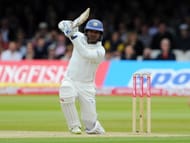
Many choices in this list involve a trade-off between flair and steadiness. In Kumar Sangakkara, I find a good mix of both. Very capable of playing in both Hayden and Morris mode, depending on who falls first, the Sri Lankan also provides an excellent option as a back-up wicket-keeper.
Sangakkaras biggest asset is his tenacity, which isevident from the number of double centuries he has notched up till date. His closest contender for this slot would be Graeme Pollock, whose batting average of 60.97 is second only to Bradman (minimum of 20 innings my sincere apology to Mominul Haque fans). Couple of factors tilted the scales in the Sri Lankansfavour:
- Experience of playing 100+ Tests more than Pollock
- Pollock is more of a dasher, whileteam balance called for someone more solid
- Back-up wicket-keeping abilities
Apartheid cut short Pollocks promising career at the age of 26, and,while his 20,000+ First-class runs provide ample proof that the Test average was no flash in the pan, I would stll stick with Sangaas my number 3.
#3 No.4 Brian Lara
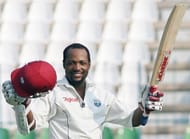
The first among a few easy decisions in the middle-order, Brian Lara receives a unanimous vote from all my grey cells for the number 4 position on this list. Probably the best Test batsman in the modern era and easily the most flamboyant, Laras ability to play his natural game irrespective of the state of the match makes him an invaluable asset.
If Haydos stays long enough to witness the departureof Morris and Sangakkara, the pair could have a wonderful discussion on the breaking and reclaiming of a trifling record that goes by the name of highest Test score.
Is there a concern? Well, maybe. If we cast our mind back to the famous 2003-04 Antigua Test, several playersand experts, led by Ricky Ponting, questioned the self-centred late declaration by captain Lara in the quest for his quadruple, which allowed England to escape defeat by the skin of their teeth.
Individualism over team will always be an elephant in Larasroom, but his talent is a perfectmahout on most occasions.
#4 No.5 Clive Lloyd (c)

The toss-up for this position, in my mind, was always going to be between Clive Lloyd and Allan Border. While Border was perhaps a slightly better batsman, Lloyd was definitely a better leader:a fact endorsed by the Australian himself, in conjunction with Kapil Dev and Imran Khana pair I,thankfully,do not have to pit against each other for a position on this list.
The need of the hour is that of a great captain, one experienced in handling a star-studded team, and the big West Indian gets my nod. An Ulyssessian obsession for the pursuit of excellence would be the perfect icing on a World XI-cake, and that is precisely what Supercatbrings to the table.
Famous for turning a highly talented but equally rudderless group of individuals into one of the most potent units during the 70s and 80s, his captaincy could be tested against individuals already stars in their own right and not hero-worshipping him.
Much like Captain America, out of time and place among the rest of the Avengers, the gentleman cricketer (though his wife may not necessarily agree) will surely command respect from the rest of the superstars within a short span of time.
#5 No.6 Garry Sobers
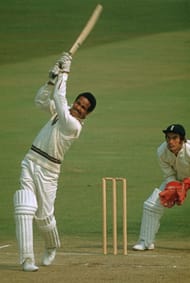
You could accuse me of stuffing the middle-order with West Indians, but no other cricketer right or left handed can stake a claim to the best ever all-roundercrown,which rests perfectly on Sir Garfield Sobers head. As concluded by ESPNCricinfo after several rounds of analyses, Sobers is not just the greatest all-rounder ever, but the greatest player.
Born with six fingers in each hand, the freak of nature almost seemedsuperhuman as far as his exploits go. He was a batsman par excellence, scoring 8000+ runs at an average ofnearly 58,and was the proud owner of our old friend highest Test score for close to fifty years, before a couple of batsmen earlier on this list meddled with it.
His 235 wickets at 34 apiece may not sound earth-shattering (isolated from his batting, of course), but his versatility he could bowl at decent pace with the new balland return to bowl orthodox left-arm or even chinaman has never been matched, before or hence.
Add to that his exceptional capabilities in the field, at every position conceivable, and you get a number 6 who can walk into any World XI in the sport with ease.
#6 No.7 Adam Gilchrist (wk)

Definitely the easiest choice on this list, Adam Gilchrist would have given stiff competition to the best of themin the wicket-keeping business even if the left-handed parameter was nullified, as duly acknowledged by The Independent. With this criterion, he wins almost unopposed, with his closest rival already a part of this team at number 3.
The history of the wicket-keeperspecie can be perfectly segmented into two ages: the pre-Gilchrist era and the post-Gilchrist era. Before Gilchrist, wicket-keepers were expected to contribute with the batand put up some sort of a resistance as the more accomplished middle-order survivor took on the bowling.
The Australian,however, seemed quite unaware of these rulesas he smashed bowlers to all corners of the parkand counter-attacked with the kind of gusto that would have put the fictitious Rocky Balboa to shame,en route to rewriting history.
Not many wicket-keepers have made such an impact, at least in Tests, in the post-Gilchrist era. Its not that the standards have fallen, but just that the bar has been raisedto levels quite difficult to meet or surpass.
It would be unfair to not mention Andy Flower, who loses out against Gilchrist, overpowered by the mans sheer awesomeness. He may have still found a place on this listas a specialist batsman, but there is no way into his favourite batting positions of 5 and 6 sealed tight by the yesteryear West Indian superstars. His short-lived ineffectiveness at number 3 (5 innings at 16.20) also eliminates a back-door entry at the expense of Sangakkara.
#7 No.8 Wasim Akram
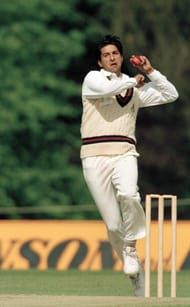
Selecting Wasim Akram was also pretty much a walk in the park: the man is the best left-arm pace bowler,ever!
A tear-away quick during his younger days, Akram was usually given absolute freedom bycaptain Imran Khan to bowl as quick as possible without worrying about no-balls, a confidence thatthe southpaw repaid with interest by bowling a few dream spells towards the business end of the 92 One Day International (ODI) World Cup, which Pakistan won.
As the years passed, pace gave way to a magical control over the red cherry. Akrams exploits at his best were like a Christopher Nolan movie thrilling, surreal and a world in itself. His monumental achievements came against all kinds of odds. His bowling action, which pounded his groin and shoulder often into submission, is described beautifully by Gideon Haigh for ESPNCricinfo:
Akram's technique was one of cricket's great wonders, defying all the usual injunctions of coaches. After a breakneck sprint, Akram barrelled through the crease, front foot pointing down the pitch, back foot toward the sightscreen, arm a blur. That he was able to repeat this almost 41,000 times in international cricket beggars belief.
Diagnosed with diabetes at the age of 31, wrecker-in-chief for a sportsman, amid a plethora of other physical infirmities, Akram continued dismantling opposition batsmen with clockwork precision over the course of his career.
A more than capable willow-wielder down the order, the Lahorite,thankfully,channelized his energies more on his bowling throughout his career, thus sparing viewers the tragedy of an Irfan Pathan prequel.
#8 No.9 Mitchell Johnson
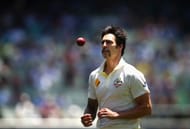
As I am the think-tank-cum-selection committee for this XI, an out-and-out quick is an absolute necessity,andtherefore, Mitchell Johnson fits the bill perfectly. The slowest among the quickest of this generation (Shoaib Akhtars and Brett Lees quickest deliveries were about 5 kmph ahead of Johnsons), the southpaws superior accuracy when on song, especially with the bouncer, makes him a much deadlier proposition than the aforementioned tearaways.
Johnson trades in the business of fear, one thata year ago practically ended the career of one of Englands best batsmen, Jonathan Trott,and had several of them fearing for their lives, according to Kevin Pieterson, as reported by Wisden.
The fear of getting hit is an acute reality, heightened immeasurably in the aftermath of the inconsolable Phil Hughes tragedy.
Johnson sleepwalked through 2011-12 and the first quarter of 2013; we,then,witnessed a miraculous turnaround,perhaps spurred by a cocktail of Homework-gate and an excellent IPL 2013, to which England and South Africa can bear painful testimony.
#9 No.10 Alan Davidson
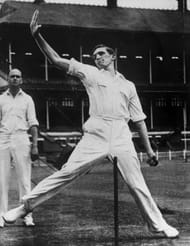
This one had me in a bit of quandary. My heart instructed me to go for Zaheer Khan, who, when considered at his peak, is an absolute asset to have in any Test side. However, my head quickly reminded me thatwhatever Zaheer didAkram did it better, and he was already in the team.
This brings me to Alan Davidson, the big-broad shouldered Australian whose bowling speed and movement often belied a very economical run-up to the crease. Davidson was a late bloomer, and his first 10 Tests only yielded 13 wickets. For the record, in Test history, only Andrew Flintoff has done worse.
Davidsons career took an upswing post the South Africa tour of 1957-58,and,over the next 5 years, he was phenomenal, finishing with 186 wickets in 44 Tests at an average of 20.53.
While the southpaw is generally bracketed as fast medium, his pace was subject to mood swings. According to Sobers, Davidson was lightning fast when the mood took him.Keith Miller, probably Australias greatest all-rounder,found Davidsons bowling deadly and devastating.
According to former Test cricketer Ashley Mallett, the quick from New South Wales was just as good as Akramand perhaps better in using his lead arm.
Besides being a very useful contributor down the order, Davidsons grit seals the deal he went into the famous 1960 tied Test against West Indies with a broken finger on his bowling hand and emerged as the first man to take 10 wickets and 100 runs in the same match.
#10 No.11 Bishan Singh Bedi
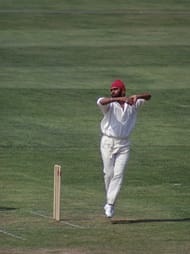
Having someone like Sobers in the team grants me the luxury of going in with only one specialist spinner. For me, it was a toss-up between Bishan Singh Bedi and Derek Underwood, the DeadlyEnglishman. While Underwood may have slightly better figures, Bedi gets the nod for the followingreasons:
- He managed to make a significant impact on the Test landscape even while sharing space (and wickets) with three of the best spinners ever produced by India
- Superior technique, especially the guile factor
- Willingness to take a few hits to buy a wicket
With Akram, Johnson and Davidson allowing very little breathing space to the batsmen, they will inevitably go after Bedi. Even if they dontpre-planit, the tempting loop would be too much to resist. Like several before them, they would commit to an aggressive stroke,when faced with what looks like a half-volley for 90 percentof its trajectory but dips wickedly at the last moment, which in all probability will lead to their doom.
Besides, Bedi adds some well-needed flavour to the team. From the Vaseline controversyto threatening to throw the entire team into the sea during his coaching stint, the outspoken Punjabi will be a wonderful presence in thischampion dressing room.
Follow IPL Auction 2025 Live Updates, News & Biddings at Sportskeeda. Get the fastest updates on Mega-Auction and cricket news
